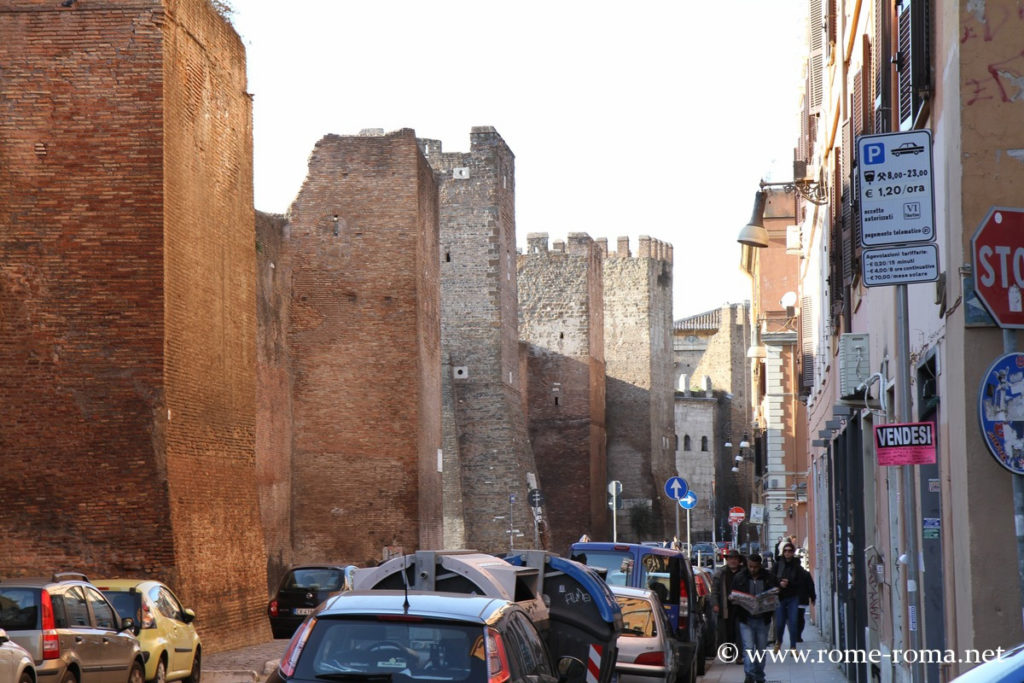Beyond the Aurelian Walls and the railway tracks of Termini station lies the San Lorenzo district. It is notably crossed by the ancient Roman road, the Via Tiburtina. Just to the south is the Porta Maggiore, and beyond the railway network lies the neighboring Pigneto, which has become one of the most vibrant districts in the city.
A student district with a significant heritage
Historically a working-class area close to La Sapienza University, it is now the main student district in Rome, featuring numerous bars, clubs, restaurants, and associations frequented by young Romans.
Among its architectural heritage, notable sections of the Aurelian Walls stand out. They include the Porta Tiburtina, also called Porta San Lorenzo, which also served as a passage for three aqueducts. Nearby, the Arch of Sixtus V and Villa Gentili are located between the walls and the aqueducts.
The ancient basilica San Lorenzo fuori le Mura (Saint Lawrence Outside the Walls) dates back to the 4th century CE and juxtaposes two buildings. It was partly rebuilt after World War II, and behind it extends the large Verano Monumental Cemetery.
In a small park, a commemorative monument for the victims of 19 July 1943 was built in 2003, listing the names of the 1,674 victims recorded in San Lorenzo.
Also noteworthy is the small garden of Villa Mercede, a pleasant relaxation space.
A popular and political history
For a long time an agricultural area, apart from the basilica and its cemetery, the district began to be urbanized at the end of the 19th century, following the opening of the Rome-Tivoli tramway in 1879 and the construction of a marshalling yard. The housing welcomed workers, railway employees, and craftsmen, giving the district its working-class identity. Large industries were established here, such as the Cerere pastry factory, the Wuhrer brewery, and the Sciarra glassworks.
Concerned with promoting education among a population living in difficult conditions, Maria Montessori established the world’s first Children’s House here in 1907.
In 1922, it was the only district in Rome to oppose the Fascist March on Rome with the Arditi del Popolo (People’s Soldiers). In retaliation, a punitive expedition led by Italo Balbo caused more than a dozen deaths. Since then, the district has maintained its reputation as a socialist and anti-fascist area, similar to Testaccio.
The University City to the north of the district was built in the 1930s, becoming the new seat of La Sapienza.
San Lorenzo and surrounding areas were heavily hit by American bombings on 19 July 1943, causing nearly 3,000 deaths when 662 bombers dropped around 4,000 bombs, primarily targeting the marshalling yard. This was the only area in Rome to be so intensively bombed.
San Lorenzo remained a hub for political groups and student or worker associations, sometimes leading student protests.
From the 1980s, the district began to gentrify and become less working-class, attracting students as well as artists and writers.
In recent years, it has also suffered from a degraded reputation due to drug trafficking.
Monuments and sites
More sites in the district
Practical information
- Hotels near Termini Station
Map of San Lorenzo district sites
Please add some markers to your posts before using this shortcode.




